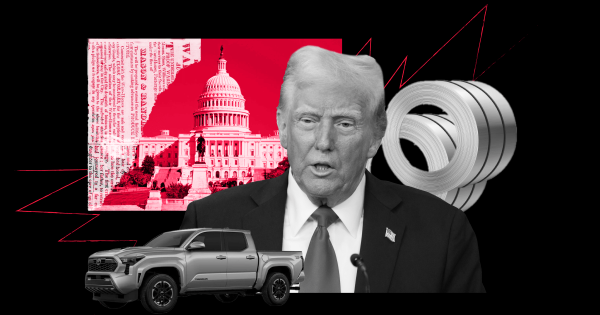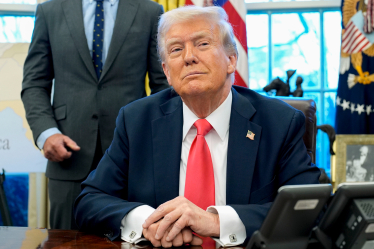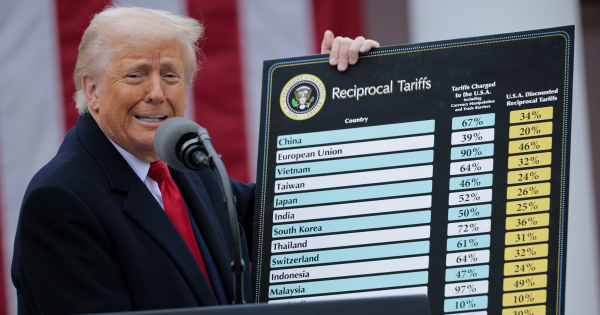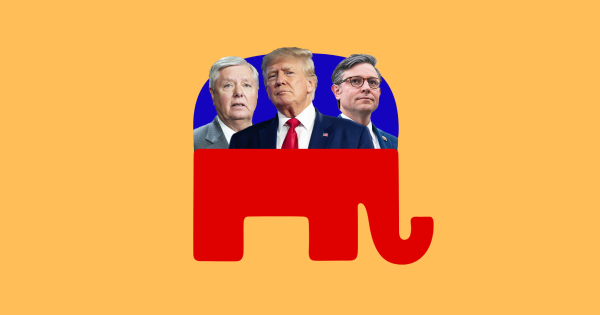
US President Donald Trump plans to announce a large-scale tariff reform on April 2 – the largest intervention in the US economy in the last century. The new customs policy should become both a source of revenue and a geopolitical lever for the US. But it is still unknown what its final format will be. The market is already reacting with panic, experts are talking about the threat of stagflation in the US and a global recession. Forbes Ukraine retells the main forecasts from Bloomberg, The Wall Street Journal and Financial Times
A gift for true leaders
Forbes Certificate — 365 days of access to quality analytics, insights, and mind-blowing success stories. Buy Now
“I’ve already decided everything,” Donald Trump said in the Oval Office on the evening of March 31, referring to the decision on the tariff strategy. However, there is less and less time left until “Liberation Day” – as he himself called the day of the announcement of new tariffs – and there is still no clear understanding in Washington what format he will choose. The WSJ writes about internal disputes in the economic team: some advisers support the idea of a universal tariff of up to 20% on almost all imports, while others advocate the principle of reciprocity – separate negotiations with each country.
This is not just a discussion about economics, but a strategic decision that could reshape the architecture of world trade, the media write. The last time the US tried to carry out such a large-scale intervention was in the 1930s through the Smoot-Gawley Act , Bloomberg reminds us. Now the stakes are much higher – today the volume of US imports is three times greater than in 1930, and amounts to more than 14% of GDP.

Popular Category Companies Date Yesterday “Cynically, tariffs are in our favor.” What does Trump's tariff war mean for Ukrainian companies? Threats and opportunities for Centravis, Ajax, UBC and others
Formally, Trump's goal is to “restore justice,” but the real reason is multifaceted. The US president's team is trying to combine the protectionist slogans of his campaign, budget deficits, and new tax breaks – all in one package, comments the WSJ.
Between stagflation and a budget hole
As the US administration prepares to present tariffs in the White House Rose Garden, the US economy is already sending out alarm bells. Key consumer confidence indices – from the University of Michigan and the Conference Board – are showing a sharp decline, and pessimism is rising across all regions, according to the Federal Reserve’s March Beige Book . The energy sector, according to the Dallas Federal Reserve Bank, is particularly sensitive to the “chaotic approach to policymaking.”
Hard data on personal consumption for February also do not inspire optimism. After January's decline, spending increased slightly, but the pace of income growth has raised concerns about inflationary pressures. Fed Chairman Jerome Powell admitted that inflation has started to rise again and “progress in 2024 will be slow,” the FT writes.
Tariffs are already acting as an inflationary factor. For example, a 10% tariff on Chinese goods came into effect on February 4. Import prices for Chinese goods before the tariffs were imposed rose by 0.5% in February alone, half the increase since December 2023. Chinese suppliers are not lowering prices as the Trump administration had predicted, but are instead raising them, taking advantage of the opportunity, the FT notes.

Trump's proposed tariffs are expected to bring $700 billion to the US budget. Photo: Getty Images
Customs duties as a new tax
One of the main arguments of the tariff proponents is fiscal. According to the White House, the new tariffs could bring up to $700 billion to the US treasury. This should cover part of the cost of Trump's tax breaks, in particular, the abolition of the tip tax or a reduction in income tax, writes the WSJ.
However, experts warn that if tariffs change depending on the progress of negotiations with individual countries, this will make long-term budget planning impossible. An initiative that is supposed to bring predictable revenue turns into a political tool devoid of stability.
Global effect
Trump’s tariffs are not just a domestic story. In Brussels, ECB President Christine Lagarde called for preparations for a “worst-case scenario” that could plunge the world into economic conflict. Canadian Prime Minister Mark Carney has already declared that the old model of close integration with the United States is over.
Canada is not the only one preparing a response to Trump's tariff reform, writes Bloomberg. Mirror tariffs from Europe, Asia and Latin America could lead to a decline in American exports. The average US tariff could reach 28%, which would reduce GDP by 4% – the equivalent of $ 1 trillion or the entire economy of the state of Pennsylvania, says Douglas Irwin, an economist at Dartmouth College.
Tariffs have already been imposed – including on steel, copper, pharmaceuticals and even products from Canada and Mexico that do not meet the new USMCA requirements. China received a 20% tariff for “inadequate control of fentanyl.”

Trump's tariffs on steel from Canada and Mexico are already in effect. Photo: Shutterstock
American CEOs are increasingly vocal about their concerns, but they are trying to adapt to new realities. Tesla warned of risks to competitiveness, DataDocks recorded a 35% drop in bookings in April and an almost complete lack of demand for the summer – such behavior was observed only during the COVID-collapse of supply chains, writes Bloomberg.
The S&P 500 stock index entered correction territory in March as economists at Goldman Sachs and JPMorgan and other major investment firms lowered their U.S. growth forecasts. The worries continued to weigh on global financial markets on Monday, with U.S. stocks closing in on their worst quarter relative to the rest of the world since 2009, and Japan’s Nikkei 225 down about 4%, Bloomberg reports. “We are once again looking at a recession,” Mark Zandi, chief economist at Moody’s Analytics, wrote in a recent note.
The trade uncertainty index is at an all-time high. The number of mentions of tariffs in corporate reports has quadrupled since November 2024, to more than 1,200 in March alone, the FT reports.
Perhaps the most radical aspect of the new tariff strategy is the US’s rejection of multilateral mechanisms. “Forget GATT and WTO . We will create our own rules for each country,” Bloomberg quotes former US Trade Representative Michael Froman as saying. This could look like a new type of globalization – without universal rules, with the priority of force over law.
The consequences could be long-term: escalating protectionism, rising prices, falling productivity. In the long term, a new architecture of global trade will be shaped not by the WTO, but by the political will of major economies.



